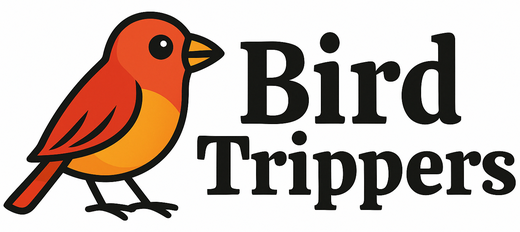Do All Birds Have Tails: Long, Short, or No Tail At All
Ever wonder about the vital role a bird’s tail plays? From steering mid-flight like a rudder to elaborate mating displays, the tail is crucial for a bird’s survival and reproduction. Discover the fascinating diversity of bird tails, from the long, elegant plumes of peacocks to the short, practical tails of sparrows, and even the surprising absence of tails in some species. Explore how tail shape affects flight, maneuverability, and communication, and delve into the evolutionary adaptations that have shaped these remarkable appendages. Learn more about the surprising science behind bird tails!
Important information

- A bird’s tail is crucial for flight, acting as a rudder for steering and a stabilizer for balance. It also helps with braking during descent.
- Tail shape varies greatly among species, impacting flight efficiency, maneuverability, and communication. Long tails aid aerial maneuvers and courtship displays, while short tails enable quick movements, often in dense habitats.
- Some birds, primarily flightless species like kiwis, emus, and ostriches, have adapted to their environments by having reduced or absent tails.
- The tail plays a vital role in communication, especially during mating displays. Males often have longer tails than females, using them to attract mates.
- Tail length and shape are influenced by various factors, including age, sex, environmental conditions, molting, and injuries.
Do All Birds Have Tails?
Bird tails display a remarkable diversity in size and shape. While some birds, like ostriches and emus, have evolved to have relatively small tails, for most birds, the tail serves crucial functions. It helps maintain balance, aids in flight, and plays a role in communication. Even in flightless birds, the tail feathers can be visually striking and used for display purposes.
Birds with Tails: Common Anatomical Feature
A bird’s tail, a crucial feathery appendage, provides balance and flight control. Tail length and structure vary widely among species, reflecting adaptations to diverse environments and lifestyles. For instance, a longer tail facilitates aerial maneuvers, while a shorter tail enables quick bursts of speed. Research indicates that tail shape significantly impacts flight efficiency, maneuverability, and even communication signals. Tail feathers play a crucial role in a bird’s life, impacting flight dynamics and serving as essential tools for survival. The tail’s length and shape have evolved to suit different environments and hunting strategies.
Function
Provides balance during flight and perching, enabling stable and controlled movements.
Acts as a rudder, allowing for precise steering and adjustments in flight path.
Facilitates complex aerial maneuvers, such as sharp turns and sudden dives.
Adaptation
Tail length and structure vary among species, reflecting adaptations to diverse environments and lifestyles.
Longer tails enhance maneuverability, ideal for navigating dense forests or catching agile prey.
Shorter tails provide bursts of speed, essential for open habitats and quick escapes from predators.
Research shows that tail shape influences flight efficiency, maneuverability, and even communication signals.
Birds Without Tails: Myth or Evolutionary Adaptation?
Believe it or not, some birds lack tails. This isn’t a myth, but a testament to evolution’s adaptability. Large flightless birds, like emus and ostriches, are prime examples. Without the need for aerial maneuvering, their tails have disappeared, actually enhancing their ground speed and agility. Similarly, kiwis sport only tiny, vestigial tails. While most birds rely on their tails for essential functions, these species adapted to thrive in their unique environments by losing theirs, a clear demonstration of evolution’s remarkable power.
The Purpose of a Bird’s Tail
A bird’s tail is a remarkably versatile tool. It provides balance and stability, crucial for perching and navigating the air. Acting like a rudder, the tail steers the bird mid-flight, enabling precise turns and landings. It even helps brake during descent and supports the bird’s weight while perched.
Flight
A bird’s tail is essential for controlled flight. It acts as a rudder, enabling precise turns and stable landings. The tail also assists in braking during descent.
Communication
The tail plays a vital role in communication. Tail movements signal intentions, from courtship displays to warnings of danger. Specific tail patterns aid in species recognition.
Males often fan their tails to attract females. These intricate movements enhance maneuverability, allowing birds to execute quick turns essential for hunting or escaping predators. Research highlights how tail adjustments fine-tune a bird’s aerial positioning, contributing to both stability and agility.
Balance and Stability in Flight
A bird’s tail is essential for flight, acting as both a rudder and stabilizer. This helps the bird balance, crucial for smooth takeoffs and landings. It also allows for precise turning. By adjusting its tail feathers, a bird can change direction and maintain stability mid-flight, ensuring controlled and balanced movement through the air. The tail’s function as a rudder gives the bird directional control. The tail’s role as a stabilizer ensures balance and smooth movement. This combined functionality allows for controlled takeoffs, landings, and mid-air maneuvers.
Direction and Maneuverability Enhancements
Birds use their tails like rudders, steering their flight both vertically and horizontally. A longer tail provides stability, particularly helpful while gliding. A shorter tail increases maneuverability for rapid turns and direction changes.
Communication and Signaling with Tail Feathers
Bird tail feathers play a vital role in communication, particularly during mating rituals. These displays serve to attract potential mates and are a key factor in sexual selection. Tail movements can also convey aggression, serving as a warning to other birds. Research indicates that these displays are essential for communication between different bird species and for maintaining social order within bird populations.
Variety in Bird Tail Shapes and Sizes
Bird tails exhibit a fascinating array of shapes and sizes, each serving a distinct purpose. Long tails offer advantages for aerial maneuvering and courtship displays. For example, they enhance balance during flight, as seen in long-tailed widowbirds. These birds use their elongated tails for impressive aerial displays and to attract females. Motmots have unique racket-shaped tails, formed by shedding barbs near the tip. Forked tails, like those of swallows and terns, facilitate precise aerial maneuvers. The vibrant, elongated tails of peacocks are primarily used for attracting mates. Woodpeckers use their stiff tails for support while climbing trees.Short tails provide different benefits, often related to agility in dense habitats. Birds like wrens, sparrows, and finches have short, rounded tails for quick turns and sudden movements in dense vegetation. Similarly, grouse and ptarmigans benefit from short tails when navigating thick undergrowth.Some birds appear virtually tailless. The flightless kiwi has a tiny, vestigial tail, reflecting its terrestrial lifestyle. Certain domesticated poultry also have reduced tails, a result of selective breeding.
Long Tails
- Enhanced balance during flight, such as in long-tailed widowbirds.
- Courtship displays, as seen in the elongated tails of long-tailed widowbirds and peacocks.
- Unique shapes, like the racket-shaped tails of motmots.
- Precise aerial maneuvers, facilitated by the forked tails of swallows and terns.
- Support for climbing, as demonstrated by the stiff tails of woodpeckers.
Short Tails
- Agility in dense environments, beneficial for birds like wrens, sparrows, and finches.
- Quick turns and sudden movements in dense vegetation, aided by short, rounded tails.
- Navigation through thick undergrowth, advantageous for grouse and ptarmigans.
Long Tails: Adaptations and Examples
Bird tails, especially long ones, play a crucial role in flight control. These remarkable adaptations serve diverse purposes, exemplified by the Northern Pintail and the Long-tailed Widowbird. The Pintail’s elongated tail feathers provide exceptional stability for maneuvering. In contrast, the Long-tailed Widowbird’s impressive tail is key to its courtship displays, attracting mates. These examples illustrate how tail length contributes to both survival, such as in flight, and reproduction, as seen in courtship rituals.
Northern Pintail
The Northern Pintail’s elongated tail feathers provide exceptional stability for maneuvering.
Long-tailed Widowbird
The Long-tailed Widowbird’s impressive tail is key to its courtship displays, attracting mates.
Short Tails: Characteristics and Species
Bird tails exhibit a remarkable diversity in shapes and sizes. While common birds like sparrows, robins, and some finches have short tails adapted for efficient flight and foraging—the meadowlark’s short tail enhancing maneuverability—others display elaborate plumage. The peacock’s extravagant tail exemplifies this diversity, demonstrating how tail length and prominence reflect adaptations to specific environments and behaviors.
No Tail: The Phenomenon of Tail Deficiency
Some bird species exhibit tail deficiency, meaning they lack tails. This is common among flightless birds such as kiwis, emus, and ostriches. Their reduced or absent tails are adapted to their terrestrial lifestyles. Penguins, while not entirely tailless, have very short tails. Although tails are crucial for avian balance, flight, and communication, some birds have adapted to survive without them. While flight can be more challenging, these birds compensate for the lack of stability and control that tail feathers typically provide.
Tail Shapes and Their Aerodynamic Roles
A bird’s tail shape significantly influences its flight. Consider these examples: a dove’s square tail provides remarkable stability, a robin’s rounded tail balances maneuverability with stability, swifts’ pointed tails minimize drag for rapid flight, and a peacock’s ornate fan-shaped tail is primarily for display.These diverse tail shapes impact three key forces: lift, drag, and the power required for flight. Lift counteracts gravity. Drag is the air resistance that hinders forward motion. By adjusting their tails, birds fine-tune these forces, optimizing their flight efficiency. Even subtle tail adjustments can increase lift and reduce drag, conserving precious energy. In essence, a bird’s tail is a critical adaptation for aerial mastery.
Square-Shaped, Round, Pointed, and Fan-Shaped Tails
Bird tails come in a variety of shapes, each influencing flight and behavior. Some birds, like hawks (red-shouldered and Cooper’s), have square tails. Others, such as robins and eastern bluebirds, have rounded tails. Barn swallows and chimney swifts have distinctly pointed tails. Wild turkeys and ruffed grouse have fan-shaped tails. These varied shapes offer unique aerodynamic advantages.
Aerodynamics: Lift, Drag, and Power in Flight
A bird’s tail plays a vital role, especially at slower speeds, contributing significantly to lift generation. This influences how a bird climbs, descends, and executes turns. The tail’s size and angle are critical factors in this process. While essential for lift, the tail also produces drag, a resistance against motion. Though helpful for deceleration, overcoming drag demands more power. Therefore, a bird’s tail presents a trade-off between lift and drag, directly affecting the power required for flight. Adjusting the tail modifies these forces; for instance, a different position might necessitate increased power depending on the desired flight path. These tail adjustments are also crucial for maneuvering effectively.
Specialized Tails for Unique Functions
Raptor birds, like hawks and eagles, rely on their long tails for maneuverability while hunting. They use them like rudders for sharp turns and precise aerial control. Flightless birds, such as ostriches and emus, have evolved short tails. This is a practical adaptation for their terrestrial lifestyle where tail length is less critical for balance and movement. Conversely, some species, including peacocks and widowbirds, boast elongated tails used in elaborate mating displays. They attract potential partners by showcasing their fitness and genetic quality, a key factor in sexual selection.
Raptor Birds
Hawks and eagles use their long tails for maneuverability during hunts, enabling sharp turns and precise aerial control.
Flightless Birds
Ostriches and emus have short tails, a practical adaptation for their ground-based lifestyle.
Birds with Elongated Tails
Species like peacocks and widowbirds use their long tails in mating displays to attract mates, showcasing fitness and genetic quality.
Raptor Birds: Long Tails for Maneuverability
A Cooper’s Hawk, like other raptors, uses its remarkably long tail for exceptional maneuverability. This adaptation allows them to navigate dense forests with agility, making tight turns and quick adjustments mid-flight to pursue prey. Their aerial dexterity makes them highly effective hunters of small birds and mammals, significantly boosting their hunting success.
Flightless Birds: Tail Deficiency and Adaptation
Flightless birds, such as kiwis, emus, and ostriches, have adapted to terrestrial life by developing very small tails. This adaptation affects their movement and balance. Research indicates that these reduced tails minimize weight and drag, facilitating easier ground locomotion. Studies on these birds, known as ratites, reveal that their diminished tails contribute to distinctive running and walking gaits. For instance, ostriches can achieve high speeds while using their small tails for balance. Similarly, kiwis utilize their tiny tails to maneuver effortlessly across the forest floor.
Elongated Tails in Mating and Sexual Selection
The length of an animal’s tail often plays a significant role in attracting mates, particularly for females choosing males. This, in turn, influences breeding success and the course of a species’ evolution. A long tail can be a powerful signal of good health and desirable genes, as vividly illustrated by the male peacock’s extravagant display. While some tails, like the peacock’s, are primarily used for courtship, others serve different purposes.
Courtship
The male peacock’s tail is a prime example of a tail adapted for courtship. Its vibrant colors and elaborate patterns are designed to attract peahens.
Aerial Agility
The swift’s forked tail enhances its maneuverability in flight, allowing for swift turns and precise aerial movements. This adaptation is crucial for catching insects in mid-air.
Various factors contribute to tail length:
- age,
- sex,
- environmental conditions.
Males frequently have longer tails than females, primarily for use in courtship rituals. Events like molting and injuries can also impact tail length.


















